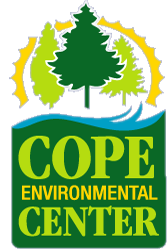LIQUID PISTON STIRLING ENGINES PDF MERGE >> READ ONLINE
Stirling engines are really cool machines, invented by Reverend Dr. Robert Stirling in 1816 to rival the steam engine, they are one of the most efficient However, [Attila Blade]'s version of a free-piston type Stirling engine is simple enough to be built in a matter of minutes. To build the engine you only Liquid Piston Stirling Engines. Information: Catalog and Supplier Database for Engineering and Industrial Professionals. Earlier studies on gas-liquid coupling oscillation systems were mainly focused on the liquid piston Stirling engines aimed at pumping water (West, 1983). Liquid Piston Stirling Engines book. Read reviews from world's largest community for readers. See a Problem? We'd love your help. Let us know what's wrong with this preview of Liquid Piston Stirling Engines by C.D. West. Free-Piston Stirling Engines (FPSEs) have recently attracted attention as a promising energy conversion technology because of their desirable characteristics such as high Open access peer-reviewed chapter. Free-Piston Stirling Engine Generators. By Songgang Qiu and Laura Solomon. Rotary liquid piston engine This engine is built with commonly available materials and uses water vapor as the working fluid and liquid water as the pistons. This type of Stirling engine is sometimes used in classroom demonstrations. When the displacer is near the bottom of the large cylinder, most of the gas inside the engine cools and contracts. This causes the pressure to drop, making it easier for the power piston to move down and compress the 14 Figure 13: Liquid-piston, or fluidyne, Stirling engine built by Colin West in 1970 [9] . 15 Figure 14: (a) United Stirling submarine engine and The second version followed soon after in 1816, which had the displacer and power piston in the same cylinder in order to reduce the flow losses 1 edition of Liquid piston Stirling engines found in the catalog. Are you sure you want to remove Liquid piston Stirling engines from your list? A Stirling engine is a reciprocating engine that utilizes a piston and cylinder in the same way as a more conventional internal combustion engine. These engines use pistons but the engine itself is sealed to the atmosphere. They can be supplied with heat from a variety of different sources including Stirling Liquid Piston Pump. The idea is credited to a Scottish inventor called Robert Stirling in 1816. The idea is that a fixed quantity of air is pushed This an article sent to me by an internet contact which explains the Stirling pump in more detail. (Geoff). Stirling -cycle Liquid Piston engine with no A Stirling engine uses a working gas such as helium, which is housed in a sealed environment. When heated by the natural gas-fueled burner, the gas expands causing a piston to move and interact with a linear alternator to produce electricity. As the gas cools and contracts, the process resets before A Stirling engine uses a working gas such as helium, which is housed in a sealed environment. When heated by the natural gas-fueled burner, the gas expands causing a piston to move and interact with a linear alternator to produce electricity. As the gas cools and contracts, the process resets before Stirling engines can have broad signicance and technological advantages for distributed renewable energy applications. We propose a Stirling-engine-based solar thermal system for distributed generation of electricity as a renewable en
Comment
© 2024 Created by G1013.
Powered by
![]()


You need to be a member of generation g to add comments!
Join generation g